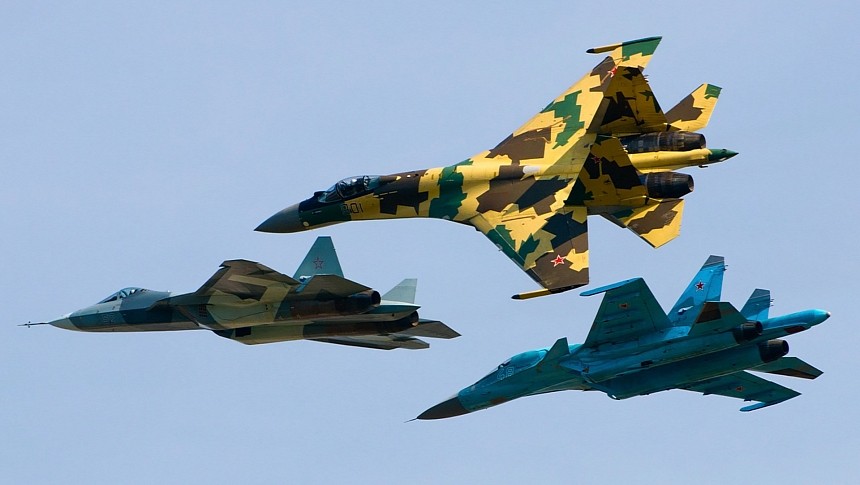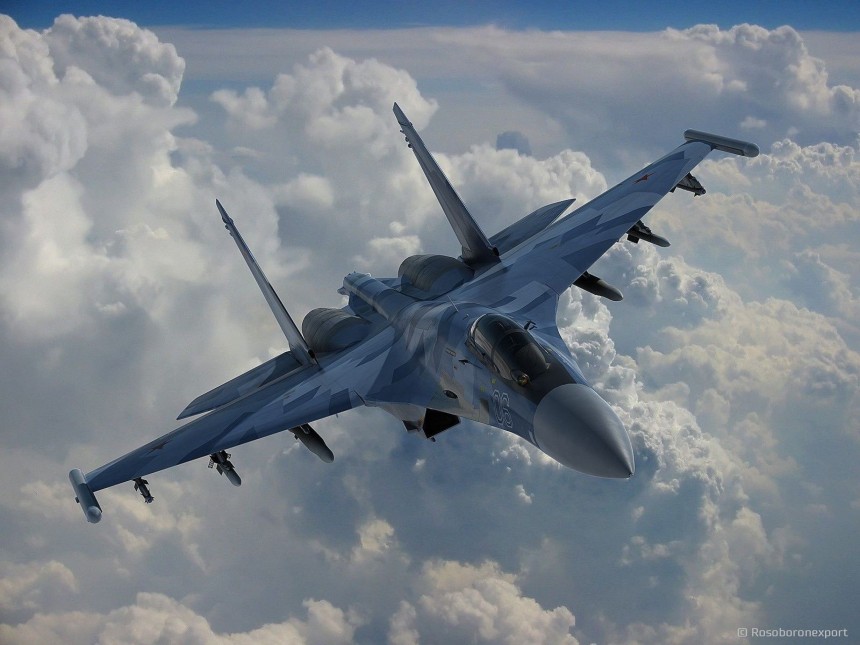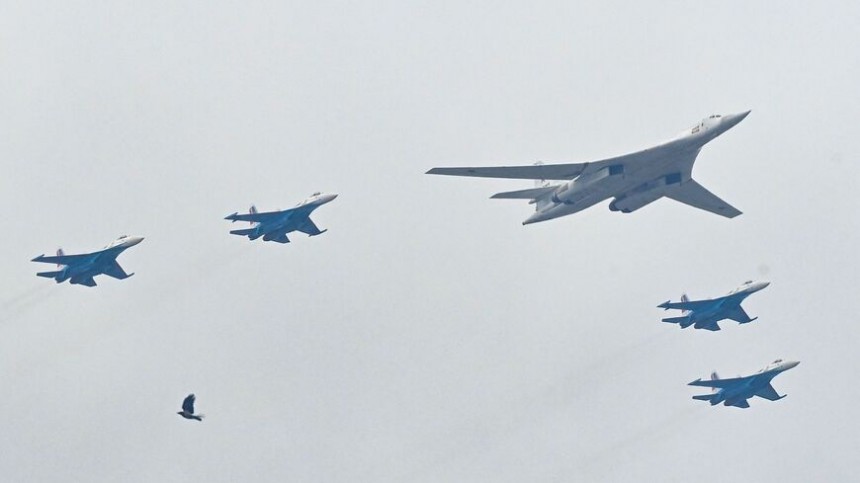Much like Stalin decades before him, when Vladimir Putin wants something done, it usually gets done without question. Unless said desire has anything to do with Ukraine, that is. But generally, that's what happens when you invade your neighbor unprovoked. In any case, all it took was a stroke of Putin's pen 17 years ago to unite all of Russia's domestic aircraft manufacturers into a new organization. One not quite like any before it in aviation history.
This is the story of the United Aircraft Corporation, Russia's aeronautical Frankenstein. Safe to say, it took a handful of certified communist classic moments in history for this chimera of a Russian super-corporation to exist at all. We've all heard the story of Mikhail Gorbachev yelling the words "Glasnost" and "Perestroika" at the top of his lungs, the Berlin Wall fell, and the red flag above the Kremlin descended for the final time on Christmas Eve, 1991. We need not rehash the story for the umpteenth time. What it all meant for the Russian aviation sector was simple, unmitigated, and utter chaos.
For all their innumerable humanitarian transgressions, the Soviets managed to field some of the most skilled and ambitious aerospace firms in the world in the seven decades it managed to stick around. From World War II and the Cold War through the dying days in Afghanistan. Though the tactics and leadership were shoddy at times, the Soviets employed their state-asset design bureaus, essentially the Soviet answer to Western private aerospace companies, to great effect.
Design bureaus like Mikoyan-Gurevich, Sukhoi, Ilyushin, Yakovlev, and Tupolev, are just a handful of names familiar to Western aviation admirers among a proverbial sea of Soviet-state assets that contributed to the wider monolithic Soviet aerospace sector. When 47 years of economic and cultural stagnation after World War II finally caught up to the Soviet megastate and the you-know-what hit the fan in late 1991, aviation, both military and civilian, took a major hit just like everything else.
In truth, this major hit to Russia's aviation sector was more like a devastating catastrophe of an affair. Because record-keeping in post-Soviet Russia was as effective as Boris Yeltsin after a night drinking with Bill Clinton, it's hard to judge exactly how many airplanes Russian design bureaus built after the wall fell. But it's thought that by the year 1998, the total number of aircraft built by Russian firms was little more than 50 airframes total. While aerospace sectors in nearby Eastern European nations like Ukraine and Romania flourished after the fall of communism thanks to the Antonov and Aerostar companies, respectively, it made Russian state assets look very poor.
By the year 2000, it's believed Russia manufactured four meager civilian aircraft in the largest nation by landmass in the world. What Russia required to get things back on track, at least in the mind of Russian President Boris Yeltsin, was an even larger degree of control and standardization over the design bureaus within Russian borders. Essentially, it was risky leaving Russian design bureaus to design and manufacture aircraft on their own in the early 2000s. But a state-owned megacorporation in charge of building all design bureau's aircraft might have a better chance to run smoothly in the seemingly endless free-fall post-communism.
To clarify, great contractions in the number of aerospace manufacturers in a single nation are nothing novel. Both the British and the Americans, at times, have consolidated several aerospace firms into one or more larger companies. Most famously, the firm British Aerospace merged three major UK-based aerospace firms, Hawker Siddeley, Scottish Aviation, and British Aircraft Corporation, into a hybrid state and private corporation with a bespoke chairman and CEO. In 1981, the British government returned British Aerospace (now BAE Systems) into fully private hands.
Meanwhile, four major American aviation firms merged to form two of the largest aerospace manufacturers in the world from 1994 to 1995, creating Northrop Grumman out of Northrop Aviation and Grumman Aerospace, and Lockheed Martin out of Lockheed Corporation and Martin Marietta. These mergers had varying levels of government oversight ranging from direct ownership, as was the case with British Aerospace, or just your typical federal megacompany merger paperwork in the case of the Americans.
But an all-encompassing state asset company in control of manufacturing an entire nation's domestic fleet of aircraft would be a different beast entirely. The first attempt by Russia to create such a company resulted in the creation of the VPK-MAPO (Military Industrial Complex – Moscow Aircraft Production Association), which consolidated the MAPO factory that built the Ilyushin Il-2 Sturmovik with the Mikoyan group famous for building the MiG line of jet fighters, among a few other companies.
Ultimately, this venture failed. But seemingly on a whim on February 20th, 2006, Boris Yeltin's successor Vladimir Putin signed into law an act merging shares of the Tupolev, Yakovlev, Ilyushin, Irkut, Mikoyan, and Sukhoi design bureaus under the existing Rostec state-corporation. With a single signature, it was hoped that Putin had set Russia back on the path toward status as an aerospace superpower. Before long, UAC was manufacturing civilian airliners from the Tupolev and Ilyushin design bureaus like the Tu-154 and Il-96 at a respectable rate compared to the start of the decade.
Through UAC acquisitions of Mikoyan and Sukhoi, the Russian Federation now had the nation's two foremost fighter jet manufacturers under the same roof. With that kind of hardware under a shared umbrella, it wasn't long before the Sukhoi Su-35 and Mikoyan MiG-35, the follow-ups to the Su-27 and the MiG-29, respectively, made their way into front-line service.
Under UAC, the company accounts for maintaining every domestic bomber, fighter, cargo plane, or airliner native to the Russian Federation, as well as conducts foreign collaborations with nations like India and China, with the latter of the two having remanufactured a great number of Russian warbirds for their own Air Force. Through the Sukhoi Su-57 "Felon" and Su-75 "Checkmate" programs, the United Aircraft Corporation also plans to bring the Russian Aerospace Forces into the fifth generation of jet fighters. It's a fleet that, sadly, isn't being used in an even slightly ethical manner in Ukraine.
In spite of building a fielding a mighty fleet of warbirds, UACs struggled to field a sizeable fleet of gen-IV fighters. To date, only 21 Su-57s have been manufactured, compared to 187 Lockheed Martin F-22 Raptors, while the Su-75 isn't scheduled to make its first flight until 2024. At least at a glance, it appears that UAC hasn't yet succeeded in bringing the Russian Aerospace Forces up to the standards of NATO Air Forces. When put in the context of the Ukrainian invasion, it paints UAC, and the Russian government that founded it, in a very negative light.
For all their innumerable humanitarian transgressions, the Soviets managed to field some of the most skilled and ambitious aerospace firms in the world in the seven decades it managed to stick around. From World War II and the Cold War through the dying days in Afghanistan. Though the tactics and leadership were shoddy at times, the Soviets employed their state-asset design bureaus, essentially the Soviet answer to Western private aerospace companies, to great effect.
Design bureaus like Mikoyan-Gurevich, Sukhoi, Ilyushin, Yakovlev, and Tupolev, are just a handful of names familiar to Western aviation admirers among a proverbial sea of Soviet-state assets that contributed to the wider monolithic Soviet aerospace sector. When 47 years of economic and cultural stagnation after World War II finally caught up to the Soviet megastate and the you-know-what hit the fan in late 1991, aviation, both military and civilian, took a major hit just like everything else.
In truth, this major hit to Russia's aviation sector was more like a devastating catastrophe of an affair. Because record-keeping in post-Soviet Russia was as effective as Boris Yeltsin after a night drinking with Bill Clinton, it's hard to judge exactly how many airplanes Russian design bureaus built after the wall fell. But it's thought that by the year 1998, the total number of aircraft built by Russian firms was little more than 50 airframes total. While aerospace sectors in nearby Eastern European nations like Ukraine and Romania flourished after the fall of communism thanks to the Antonov and Aerostar companies, respectively, it made Russian state assets look very poor.
To clarify, great contractions in the number of aerospace manufacturers in a single nation are nothing novel. Both the British and the Americans, at times, have consolidated several aerospace firms into one or more larger companies. Most famously, the firm British Aerospace merged three major UK-based aerospace firms, Hawker Siddeley, Scottish Aviation, and British Aircraft Corporation, into a hybrid state and private corporation with a bespoke chairman and CEO. In 1981, the British government returned British Aerospace (now BAE Systems) into fully private hands.
Meanwhile, four major American aviation firms merged to form two of the largest aerospace manufacturers in the world from 1994 to 1995, creating Northrop Grumman out of Northrop Aviation and Grumman Aerospace, and Lockheed Martin out of Lockheed Corporation and Martin Marietta. These mergers had varying levels of government oversight ranging from direct ownership, as was the case with British Aerospace, or just your typical federal megacompany merger paperwork in the case of the Americans.
But an all-encompassing state asset company in control of manufacturing an entire nation's domestic fleet of aircraft would be a different beast entirely. The first attempt by Russia to create such a company resulted in the creation of the VPK-MAPO (Military Industrial Complex – Moscow Aircraft Production Association), which consolidated the MAPO factory that built the Ilyushin Il-2 Sturmovik with the Mikoyan group famous for building the MiG line of jet fighters, among a few other companies.
Through UAC acquisitions of Mikoyan and Sukhoi, the Russian Federation now had the nation's two foremost fighter jet manufacturers under the same roof. With that kind of hardware under a shared umbrella, it wasn't long before the Sukhoi Su-35 and Mikoyan MiG-35, the follow-ups to the Su-27 and the MiG-29, respectively, made their way into front-line service.
Under UAC, the company accounts for maintaining every domestic bomber, fighter, cargo plane, or airliner native to the Russian Federation, as well as conducts foreign collaborations with nations like India and China, with the latter of the two having remanufactured a great number of Russian warbirds for their own Air Force. Through the Sukhoi Su-57 "Felon" and Su-75 "Checkmate" programs, the United Aircraft Corporation also plans to bring the Russian Aerospace Forces into the fifth generation of jet fighters. It's a fleet that, sadly, isn't being used in an even slightly ethical manner in Ukraine.
In spite of building a fielding a mighty fleet of warbirds, UACs struggled to field a sizeable fleet of gen-IV fighters. To date, only 21 Su-57s have been manufactured, compared to 187 Lockheed Martin F-22 Raptors, while the Su-75 isn't scheduled to make its first flight until 2024. At least at a glance, it appears that UAC hasn't yet succeeded in bringing the Russian Aerospace Forces up to the standards of NATO Air Forces. When put in the context of the Ukrainian invasion, it paints UAC, and the Russian government that founded it, in a very negative light.

































